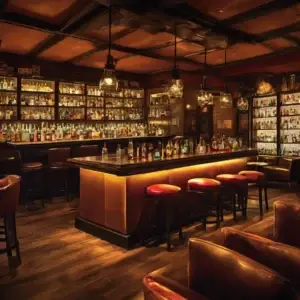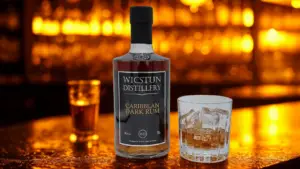In the quiet cellars of Cognac, France, where the air carries the weight of history and the scent of aging brandy, barrels breathe. Within these dimly lit spaces, clear eau-de-vie slowly transforms into golden liquid, guided by the hands of time and the patience of tradition. The beauty of Cognac lies not only in its grapes or distillation, but in the living vessels that cradle it — the French oak casks that give it depth, color, and soul.
The Forests That Give Life to Cognac
The story of Cognac begins long before distillation, deep within the ancient forests of Limousin and Tronçais. These forests, protected and managed with care, supply the oak that defines Cognac’s identity. Trees here grow for more than a century before being harvested. Their slow growth creates a wood that is both strong and expressive, rich in tannins that shape the character of the spirit over decades.
Limousin oak, known for its open grain, allows greater interaction between air and spirit. The result is a Cognac with pronounced spice, warmth, and structure. Tronçais oak, by contrast, offers a tighter grain, releasing its influence more slowly and gently, lending notes of subtle vanilla, fine sweetness, and elegance. Together, they represent the dual nature of French craftsmanship, power balanced by grace.
The Cooper’s Craft
Once felled, these ancient oaks are handed to the coopers, the artisans who transform timber into barrels through a process of cutting, shaping, toasting, and binding. Each stave is curved by fire and assembled with precision, without a single nail or screw. The toasting of the wood is a defining moment, one that determines the flavors that will later emerge. A lighter toast draws out delicate floral and citrus notes, while a deeper toast introduces tones of caramel, spice, and toasted almond.
Cognac houses work closely with cooperages to perfect this process. Some, such as Hennessy and Rémy Martin, maintain long-standing relationships with master coopers who craft barrels tailored to each house’s distinct style. Others go further, owning or managing their own sections of forest, selecting trees decades before their use. Every decision, from forest to fire, contributes to the spirit’s future voice.
The Art of Maturation
Both nature and human intuition guide the transformation of Cognac in the barrel. The maître de chai, or cellar master, oversees every stage of the spirit’s life in wood. When eau-de-vie first enters a new oak cask, it begins an intense exchange, drawing color, tannin, and aroma from the wood. Yet new oak can easily overwhelm, so after a period of months or years, the spirit is often moved into older casks, where its maturation continues more gently.
This progression from youthful vigor to seasoned refinement is what gives Cognac its complexity. The oak’s influence softens as time passes, allowing the spirit’s fruit, spice, and floral notes to harmonize. The cellar’s temperature, humidity, and even its floor composition play a role, guiding how each barrel evolves. In these quiet spaces, the spirit breathes with the seasons, deepening and refining its identity with each passing year.
A Dialogue Between Nature and Mastery
The beauty of Cognac lies in the partnership between grape, oak, and human craft. Each barrel is a storyteller, holding within it the essence of the forest and the vision of the distiller. No two casks mature the same way, and it is the role of the cellar master to listen, to taste, assess, and guide the spirit toward balance. This is not an exact science but a living dialogue, shaped by centuries of observation and experience.
What makes Cognac so exceptional is its respect for time. It cannot be rushed. The spirit must breathe, evolve, and grow. The oak, seasoned by years of sun and rain, becomes a bridge between nature’s rhythm and human intention. Every sip of Cognac, then, is an encounter with both elements, a distilled conversation between the vineyard and the forest.
The Legacy in Every Glass
For the Barlist community, Cognac is more than a symbol of refinement. It is a masterpiece of patience and precision, a living testament to the symbiosis of land, wood, and craft. When you lift a glass of Cognac, you are tasting more than aged brandy. You are tasting the whisper of French oak, the vision of master coopers, and the centuries of knowledge resting in the hands of the maître de chai.
So, when you next savor Cognac, think not only of the vineyard but also of the forest. Within every drop lies a story of endurance and artistry, a reminder that true elegance is born not of haste, but of harmony between earth, time, and the human spirit.


